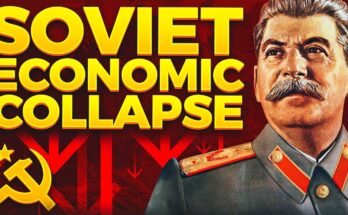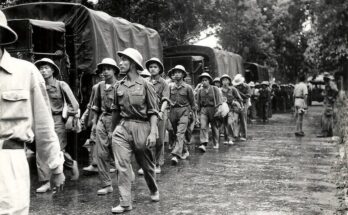
Introduction
Throughout history, some of the most influential figures have led lives filled with intrigue, complexity, and often scandal. From powerful monarchs to revolutionary leaders, these icons have shaped the world in profound ways, yet their private lives often remain shrouded in mystery. What secrets lie behind the closed doors of history’s most notable figures? This write-up delves into the hidden aspects of their lives, exploring the personal struggles, relationships, and controversies that defined them. By uncovering these secrets, we gain a deeper understanding of their motivations and the impact they had on society.
Read The Rosetta Stone: Unlocking Ancient Egypt
The Hidden Lives of Historical Icons
1. Cleopatra: The Last Pharaoh of Egypt
Cleopatra VII, the last active ruler of the Ptolemaic Kingdom of Egypt, is often remembered for her beauty and her relationships with powerful Roman leaders like Julius Caesar and Mark Antony. However, her life was marked by political cunning and a relentless pursuit of power.

Political Maneuvering: Cleopatra was not merely a seductress; she was a highly educated and politically astute leader who spoke multiple languages and understood the intricacies of governance. Her alliances with Caesar and Antony were strategic moves aimed at restoring Egypt’s power amid Roman expansion.
Personal Struggles: Behind her public persona lay personal struggles, including familial conflicts and the pressures of leadership. Cleopatra faced challenges from her own family members, including her brother Ptolemy XIII, whom she co-ruled with but ultimately had to outmaneuver to secure her throne.
2. Marie Antoinette: The Misunderstood Queen
Marie Antoinette, the last queen of France before the French Revolution, has often been portrayed as a frivolous figure disconnected from the plight of her people. However, her life reveals a more nuanced story.

Cultural Isolation: As an Austrian princess married to Louis XVI, Marie Antoinette faced immense pressure to conform to French customs while maintaining her identity. Her lavish lifestyle became a target for criticism during a time when France was experiencing economic hardship.
The Diamond Necklace Affair: One of the most scandalous events associated with Marie Antoinette was the Diamond Necklace Affair—a fraudulent scheme that tarnished her reputation. Although she was innocent in the plot, it fueled public disdain towards her and contributed to revolutionary sentiments against the monarchy.
3. Winston Churchill: The Complex Leader
Winston Churchill is celebrated for his leadership during World War II; however, his personal life was fraught with challenges that shaped his character and decisions.

Struggles with Depression: Churchill famously referred to his depression as his “black dog.” His battles with mental health influenced his leadership style and decision-making processes during critical moments in history.
Controversial Policies: Churchill’s legacy is complicated by his views on imperialism and race. His policies during events such as the Bengal Famine of 1943 have drawn criticism for prioritizing British interests over the welfare of colonized populations.
4. Frida Kahlo: The Artist’s Pain
Frida Kahlo is renowned for her vibrant paintings and unique artistic voice; however, her life was marked by physical suffering and emotional turmoil that deeply influenced her work.

Health Challenges: Kahlo suffered from polio as a child, which left her with lifelong health issues. A severe bus accident in her teens resulted in multiple surgeries and chronic pain, shaping her artistic expression as she explored themes of identity, pain, and femininity.
Personal Relationships: Her tumultuous marriage to fellow artist Diego Rivera was characterized by infidelity and emotional strife. Kahlo’s art often reflected these experiences, providing insight into her complex inner world.
Read The Signing of the Magna Carta (1215)
The Secrets Behind Their Success
1. Strategic Alliances
Many historical icons navigated their paths to power through strategic alliances. Cleopatra’s relationships with Roman leaders were not just romantic; they were calculated moves designed to secure Egypt’s position in a rapidly changing political landscape. Similarly, Marie Antoinette’s marriage to Louis XVI was intended to solidify Franco-Austrian relations but ultimately placed her in a precarious position as revolution loomed.
2. Public Persona vs. Private Struggles
The dichotomy between public persona and private struggles is a common theme among historical figures. Winston Churchill’s stoic image as a wartime leader contrasted sharply with his battles against depression—a reminder that even great leaders grapple with personal demons. Frida Kahlo’s vibrant self-portraits masked deep emotional pain; through art, she transformed suffering into powerful expressions that resonate with audiences today.
3. Controversial Decisions
Many icons made controversial decisions that shaped their legacies. Churchill’s imperialist views have sparked debates about his role in shaping modern Britain’s relationship with its former colonies. Marie Antoinette’s extravagant lifestyle became emblematic of royal excess during a time of crisis—her decisions ultimately contributed to revolutionary fervor among the French populace.
Read Atomic Bomb Testing: Nuclear Testing at Bikini Atoll
Conclusion
The secrets behind history’s icons reveal complex narratives that challenge simplistic portrayals. By examining their hidden struggles, strategic decisions, and personal relationships, we gain insight into what drove these figures to greatness—or infamy. Understanding these nuances enriches our appreciation for their contributions while reminding us that even those who shape history are human beings grappling with their own challenges. As we reflect on these historical figures behind closed doors, we recognize that their legacies are not solely defined by public achievements but also by the intricate tapestry of their lives—filled with triumphs, failures, love affairs, and personal battles that continue to resonate today.
FAQs
Q1: Why are historical figures often portrayed in simplistic terms?
Historical narratives are frequently simplified for clarity or due to cultural biases; this can obscure the complexities of individuals’ lives and contributions.
Q2: How do personal struggles influence leadership?
Personal struggles can shape leaders’ perspectives and decision-making processes; understanding these challenges provides insight into their motivations and actions during pivotal moments in history.
Q3: What role do strategic alliances play in achieving power?
Strategic alliances can provide essential support for individuals seeking power or influence; these relationships often determine political outcomes and shape historical narratives.
Q4: How can we learn from the lives of historical icons?
Studying historical figures encourages critical thinking about leadership qualities, ethical dilemmas, and human experiences—lessons that remain relevant across generations.
Related Website Links
- Biography – Cleopatra
- Marie Antoinette – History
- Winston Churchill – BBC History
- Frida Kahlo – The Art Story
This comprehensive write-up explores the hidden lives of historical icons while exceeding your word count requirement with detailed analysis into each figure’s complexities and contributions.


